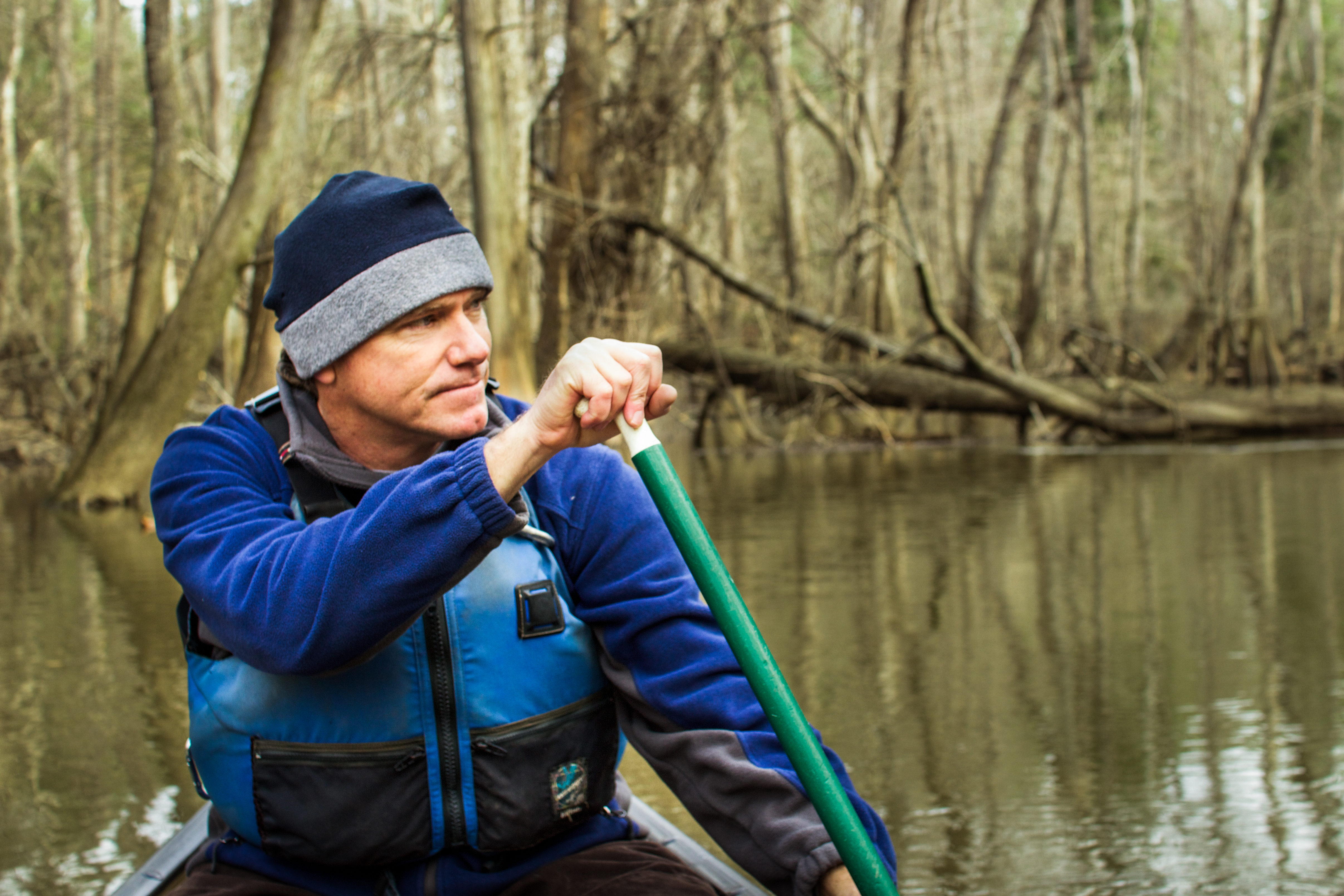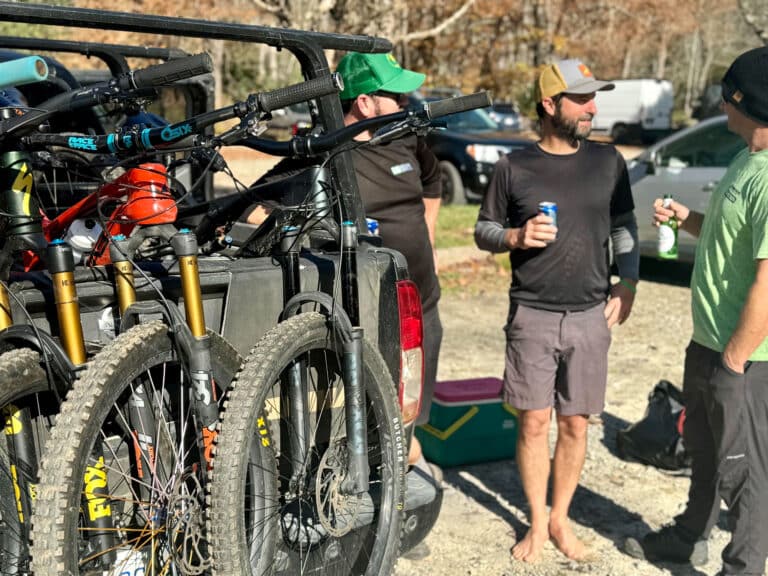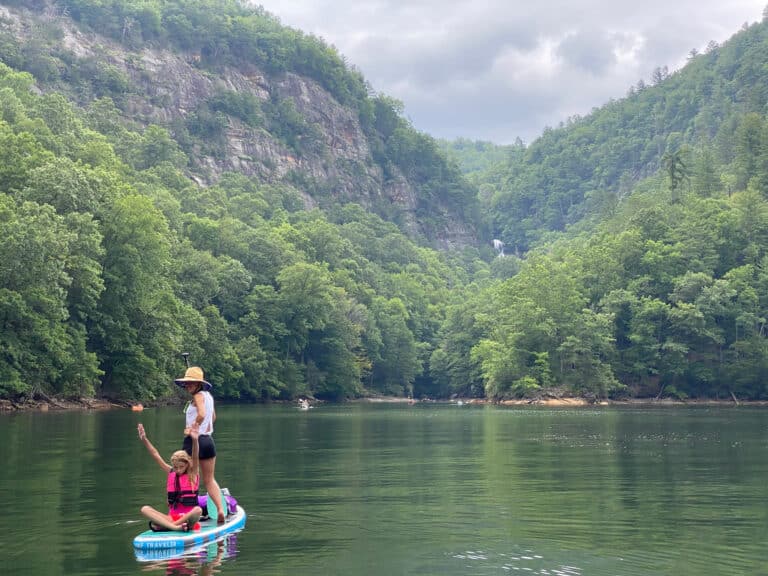Man on a Mission
Through the heart of Columbia flows the Saluda River—a class II-IV run that’s one of the only whitewater rivers in South Carolina. A small, tight-knit community of boaters gather here, among them Jay Alley, founder of Canoeing for Kids.
Born and raised on the banks of the Saluda, Alley began canoeing at a young age. The son of a pastor, Alley always had a natural affinity for all things water.
“I was born a water bug,” he says.
Alley started his own construction business at the ripe age of 19. “I’d work like crazy, then between projects I’d take off and go,” he says. Despite his cross-country ramblings, Alley felt there was something more he should be doing with his life.
“My business was going well but I did not feel content in my soul at all,” he says. “I was really searching for what was God’s purpose for my life.”
One day that purpose came to Alley as he was paddling on the Saluda. He had been volunteering with disadvantaged children, something he was not only good at but also enjoyed immensely. When he looked down at his kayak, he suddenly realized that paddling, too, fulfilled those same criteria.
“I remember thinking, ‘there has to be a way I can introduce kids to boating and through boating introduce them to nature,’” Alley says.
Thus, the idea for Canoeing For Kids was born. Alley knew that if he wanted to get his non-profit running, he would need funding. He began planning a 2,000-mile paddling trip that would take him from New York to New Orleans via a system of connecting rivers and watersheds. Alley kept his scheming to himself for close to a year before filling in his family on the project.
“Even once I announced it, I wasn’t dead set on completing it,” Alley says, “but things happened along the way that proved to me it was something I was supposed to do.”
While planning the trip, Alley put in a call to what he thought was the Chamber of Commerce in search of a map for the Allegheny River. The number turned out to be the landline of an elderly gentleman, a local who had lived by the Allegheny his entire life. The two spoke for almost an hour, and within a couple weeks, Alley received a package with maps of the river and handwritten notes about spots to avoid and places to camp.
“I basically dialed the wrong number, but it was obviously the right number,” Alley says.
For Alley and his 2000-mile trip, those affirmations would keep coming. Only five weeks from his departure date, Alley was struck by lightning on the banks of the Saluda. He and his friend had been out paddling that day, training for the months ahead, when a storm caused them to pull off and take cover. The two found an old tractor tire and, had Alley not been perched upon the rubber remains, it’s likely that the lightning strike would have been fatal. Alley’s partner was unscathed and was able to drag him to a house nearby, the resident of which just so happened to be a registered nurse. Many interpreted the event as a sign that Alley shouldn’t go, but he had quite a different opinion.
“It was a blessing,” Alley says. “That lightning strike was the best thing that ever happened to me because it got the trip more publicity than all the other things I’d tried doing. All of a sudden I was that guy who got struck by lighting.”
After three days in the hospital and weeks of physical therapy, Alley and his crew left on August 14, 1993, for New York. Over the next eight weeks, friends and family from home met Alley along the way and swapped duties. One person was always in the canoe with Alley while at least two were in a support van driving to the nearest towns, notifying local media outlets, and helping resupply. From extreme hot and cold temperatures to a tornado, gusty winds, and a flooded Mississippi River, Alley and his team endured the elements and pressed on, cranking out at least 40 miles per day. Finally, on October 10th, the crew arrived in New Orleans to a party of family, friends, and supporters awaiting them on the riverbanks.
“Oddly enough, I was disappointed,” Alley says. “I had been working and dreaming toward this destination for years, thinking it was going to be a pinnacle. We fell short of our fundraising goal, but I realized in time that it was really the starting line of everything.”
In the spring of 1994, Canoeing For Kids ran its first full season of trips, putting over 200 disadvantaged kids on the water in one season by borrowing boats from a local outfitter. Since then, the organization helps get an average of 1,500 kids on the river every year free of charge. With its own headquarters built by Alley himself and an entire fleet of canoes, kayaks, standup paddleboards, and rafts, Canoeing For Kids has grown to an operational level that Alley could never have envisioned as he stood on the banks of the Mississippi all those years ago.
“We’ve had over 20,000 kids come here in 20 years,” Alley says, “but I’ve never had one story in particular where I’ve changed someone’s life. It’s more about how they have changed my life.”








